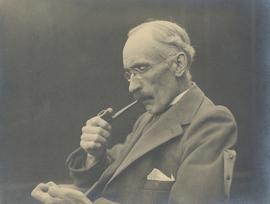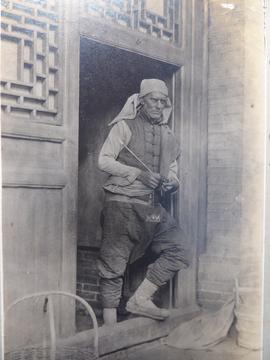George Paxton, born 1 July 1850, was the eldest son of George Paxton senior of Richardland House, Kilmarnock, Ayrshire, who was a partner in the Richardland Brewery. Around 1887, by then in sole charge of the brewery in succession to his father and uncle, Paxton took up photography, a pastime to which he devoted increasing amounts of energy. A founder member of Kilmarnock Amateur Photographic Society, by 1890 he had joined Talbot Circulating Album Club, ‘founded for the monthly circulation and criticism of members’ work’, which connected a network of dedicated enthusiasts across Britain.
In his lifetime Paxton was best known for his the quality of his photographs of trees and other botanical subjects, mainly taken in Ayrshire, which he used for lecture slides and illustrations for his journal and magazine articles. In 1894 he was commissioned by RBGE Regius Keeper, Professor Isaac Bayley Balfour, to produce an album named 'Remarkable Trees in Ayrshire Photographed and Measured by G. Paxton, Kilmarnock'. This album, which remains in the collection of RBGE Library, contains 34 photographs of trees, each annotated by hand with the identity, history and measurements of the tree and the date of photography. Paxton went on to be elected to membership of the Royal Scottish Arboricultural Society, and was appointed Photographic Artist to the Society in January 1897. He provided formal images of members during their annual summer excursions, including to the Upper Forth Valley and Loch Lomond District (1896), southern Ireland (1897), Ulster (1900), Ayrshire and Glasgow (1901) and an extended visit to Sweden in 1902. Thereafter, already suffering from the effects of the neurological disease which soon proved fatal, he was replaced by A.D. Richardson.
Paxton died in Bournemouth on 16 May 1904, leaving his entire estate to his only child, Edith.
H.B.




